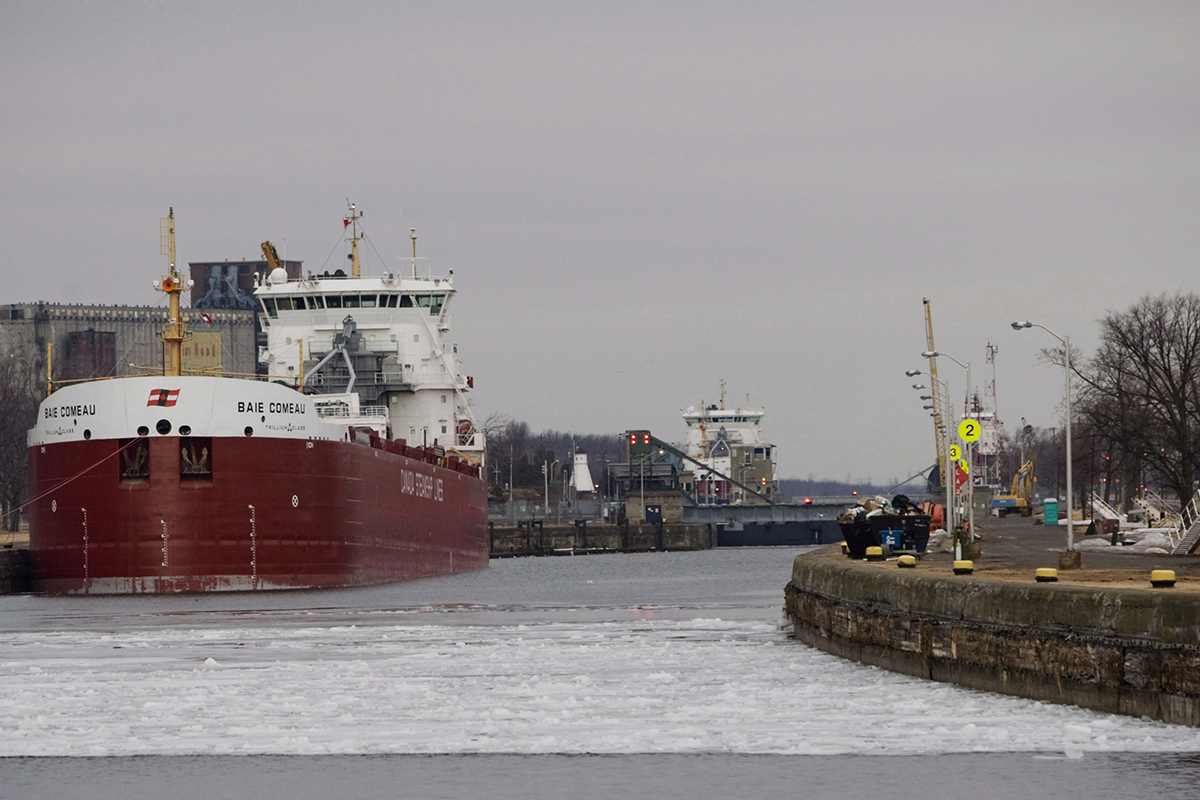MONTREAL – Shippers on the Great Lakes and St. Lawrence Seaway want the Canadian government to fund a couple of new heavy icebreakers for the waterways, possibly using money from its widely touted infrastructure program.

Stephen Brooks, president of the Ottawa-based Chamber of Marine Commerce, says the binational group is pressing governments in both Canada and the United States to continue funding and maintaining their assets in the shipping system.
“It’s encouraging to hear the existing government puts an emphasis on infrastructure funding, so we’re hopeful,” Brooks said.
However, funding for icebreakers would be ineligible under the New Building Canada Fund and another one devoted to shipping infrastructure, according to a spokeswoman for the federal Infrastructure Department who said both are aimed at fixed capital assets.
READ MORE: Student group wants Liberals to spend $3.3B annually on free college, university
The U.S. Congress recently approved a law that would provide funding to purchase one heavy icebreaker that would complement the lone heavy U.S. vessel that currently operates with eight smaller ships throughout the Great Lakes.
Brooks said the shippers would like to Ottawa fund two new heavy vessels, which he said would typically cost $150 million apiece, to be stationed on the Great Lakes and St. Lawrence Seaway.
There now are about a dozen Canadian icebreakers of various sizes and ages that operate across the Arctic, the east coast, the St. Lawrence River and the Great Lakes.
READ MORE: Big cities in need of big dollars for big projects: mayors
“That’s a lot of geography,” Brooks said in an interview. “Because there’s such a lack of supply of the resources, the coast guard has to constantly move them around to different territories, different locations.”
A stronger El Nino – a warming of waters in the equatorial Pacific – has brought milder temperatures to Eastern Canada, meaning less ice that should result in an earlier opening of the seaway this year.
However, heavy ice buildup in the Great Lakes over the previous two years delayed the opening on the St. Lawrence Seaway as the limited supply of icebreakers was stretched thin across a large area of water.
- Trudeau tight-lipped on potential U.S. TikTok ban as key bill passes
- Canadian man dies during Texas Ironman event. Her widow wants answers as to why
- Hundreds mourn 16-year-old Halifax homicide victim: ‘The youth are feeling it’
- On the ‘frontline’: Toronto-area residents hiring security firms to fight auto theft



Comments